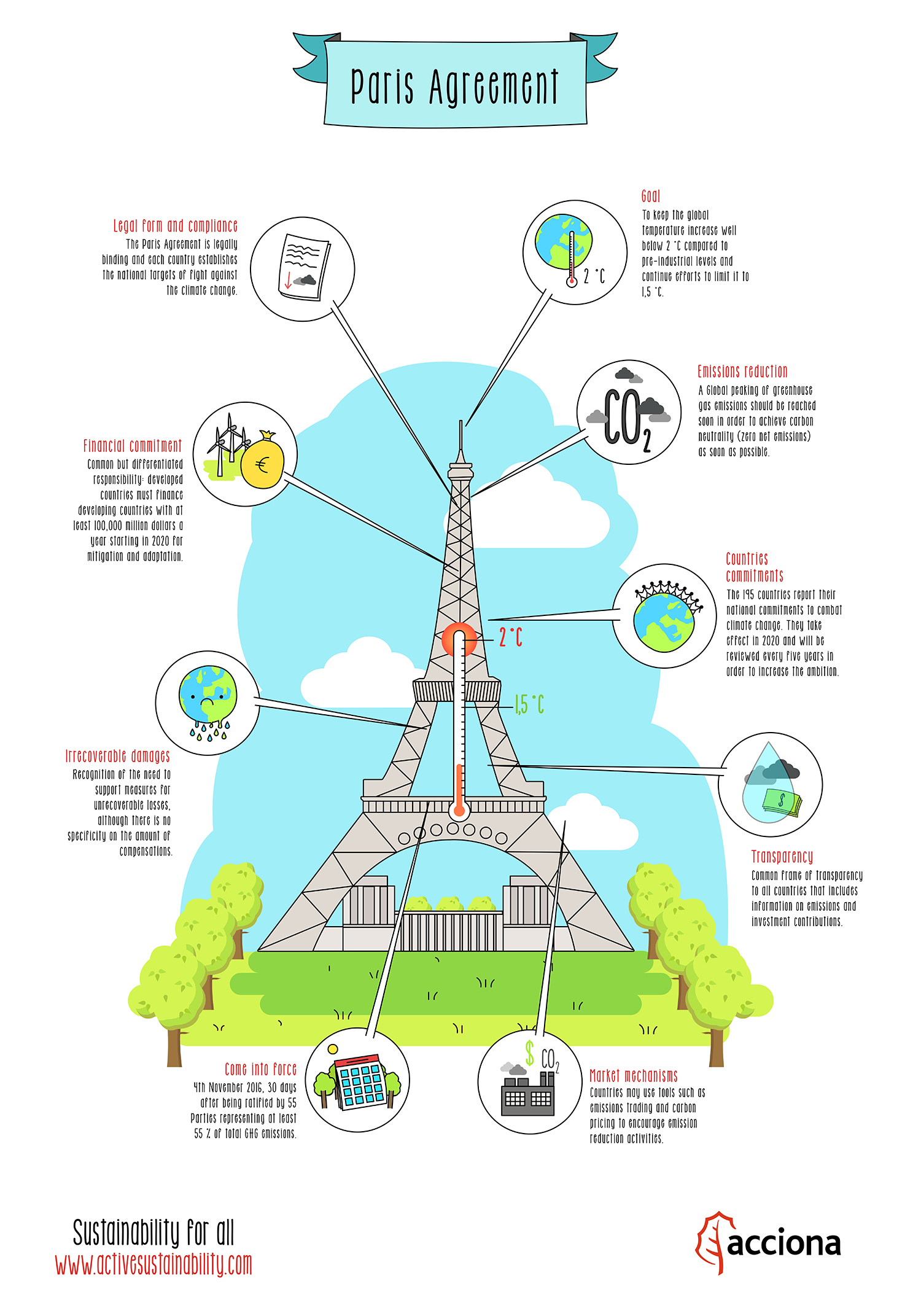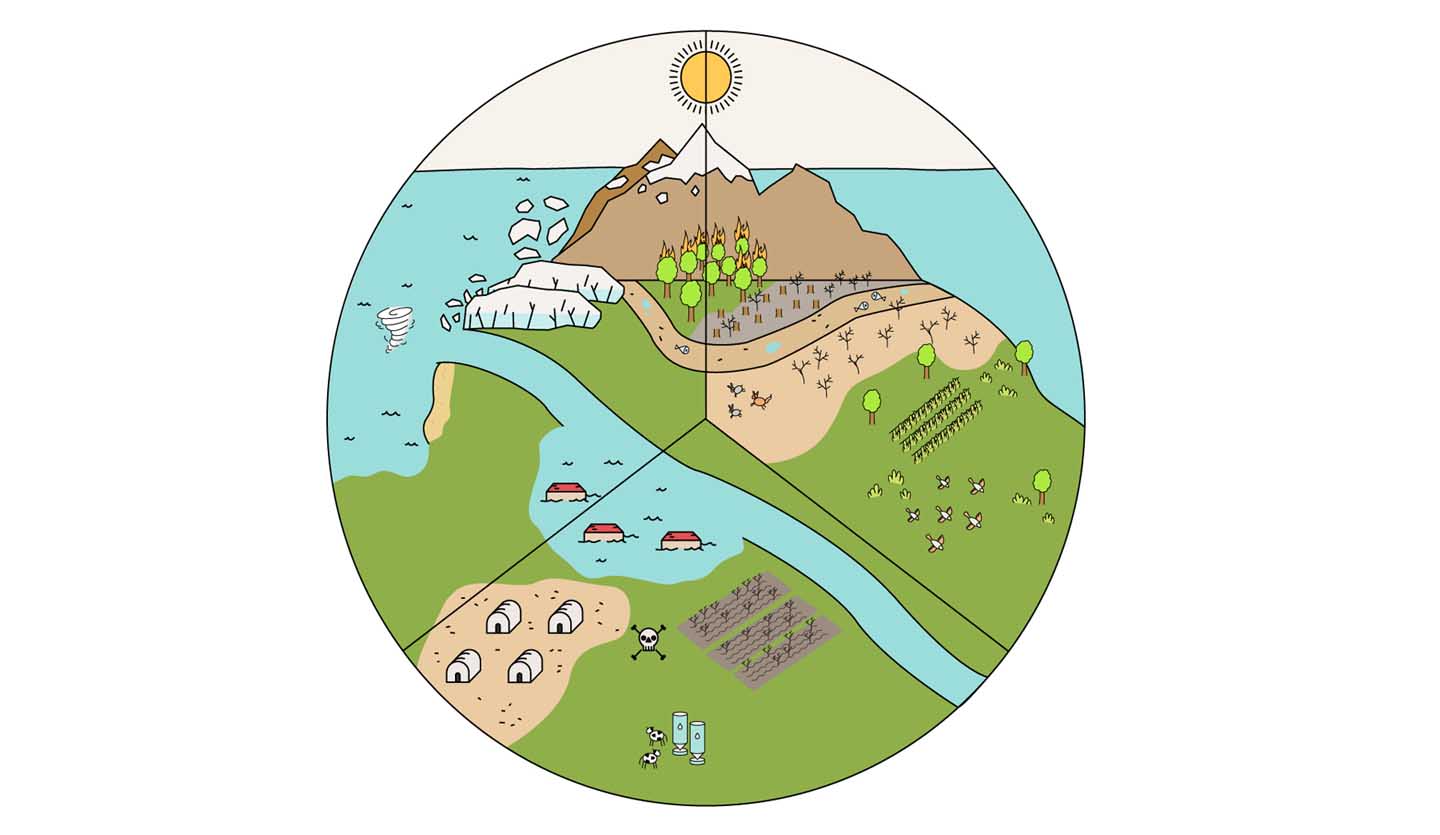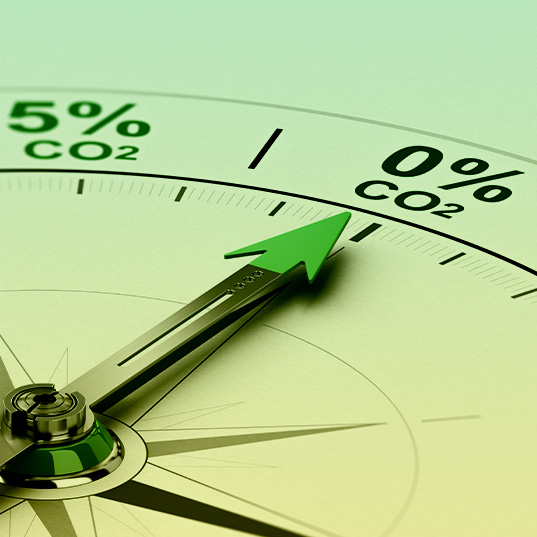Paris Agreement: what is it?
In the Paris Agreement, 195 countries agreed to reduce emissions of greenhouse gases through mitigation, adaptation and resilience
In the last Conference of the Parties (COP21) in Paris, December 2015, and after 20 years of negotiations, 195 countries agreed to limit global warming to two degrees Celsius above pre-industrial era. How? Reducing emissions of greenhouse gases through mitigation, adaptation and resilience.
The resulting deal is known as the Paris Agreement and this November 4th enters into force, before the COP22 in Marrakech, after its ratification by at least 55 parties representing more than 55% of global emissions of greenhouse gases.
In this infographic we highlight the keys elements of the Paris Agreement, which are also listed below:
Goal
To keep the global temperature increase well below 2 0C compared to pre-industrial levels and continue efforts to limit it to 1.5 0C.
Emissions reduction
A Global peaking of greenhouse gas emissions should be reached soon in order to achieve carbon neutrality (zero net emissions) as soon as possible.
Countries commitments
The 195 countries report their national commitments to combat climate change. They take effect in 2020 and will be reviewed every five years in order to increase the ambition.
Transparency
Common frame of transparency to all countries that includes information on emissions and investment contributions.
Market mechanisms
Countries may use tools such as emissions trading and carbon pricing to encourage emission reduction activities.
Come into force
4th November 2016, 30 days after being ratified by 55 Parties representing at least 55% of total GHG emissions.
Irrecoverable damages
Recognition of the need to support measures for unrecoverable losses, although there is no specificity on the amount of compensations.
Financial commitment
Common but differentiated responsibility: developed countries must finance developing countries with at least 100,000 million dollars a year starting in 2020 for mitigation and adaptation.
Legal form and compliance
The Paris Agreement is legally binding and each country establishes the national targets of fight against the climate change.








